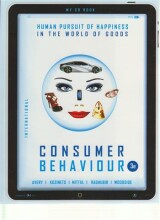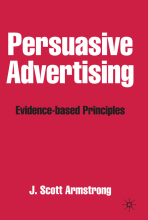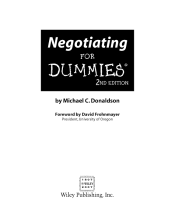Decision models: compensatory and noncompensatory - Consumer values
10 important questions on Decision models: compensatory and noncompensatory - Consumer values
You can distinguish between two types of values, name these.
- Terminal values: the goals we seek in life, e.g. freedom, wealth, salvation).
- Instrumental values: the means, paths or behavior standards by which we pursue those goals (e.g. honesty, altruism).
Compare the LOV with Maslow's Hierarchy of Needs and explain.
The values of both frameworks correspond well, except that Maslow includes physiological needs and LOV adds values of fun and excitement.
Does LOV explain consumer behavior?
Yes, LOV has been found related to consumer activities: for example, people who valued a sense of belonging especially liked group activities, those who valued fun and enjoyment especially liked skiing, dancing, drinking.
- Higher grades + faster learning
- Never study anything twice
- 100% sure, 100% understanding
Consumers obviously differ in their values, so how can LOV be used?
To segment consumers. Three sharply distinct values-based segments are:
- Achievement
- Hedonism
- Relationships
People who value relationships with others are more susceptible to interpersonal influence. What does this result in?
These people want socially visible products such as clothing. Image and brand style is very important, as opposed to functional features.
Does LOV comprise all consumer values?
No, other values influence consumer behavior as well, both general as well as consumer specific values.
How will individuals who value individualism behave differently than those who value collectivism.
Collectivists will consume in a way that is good for society as a whole, e.g. eco-friendly car. An individualistic consumer will buy the car that pleases him regardless of its environmental impact.
Values affect the choices that consumers make at three levels:
- Marketplace activity
- Choice of product category
- Preference for product attributes
What are means-end-chains?
Pathways connecting product attributes to ultimate consumer goals or values. These are links between a product's physical features and the consumers' fundamental needs and values.
How can marketers find the links that are depicted in means-end-chains?
They use a technique called laddering: iterative sequences asking why is that feature important for you.
The question on the page originate from the summary of the following study material:
- A unique study and practice tool
- Never study anything twice again
- Get the grades you hope for
- 100% sure, 100% understanding































